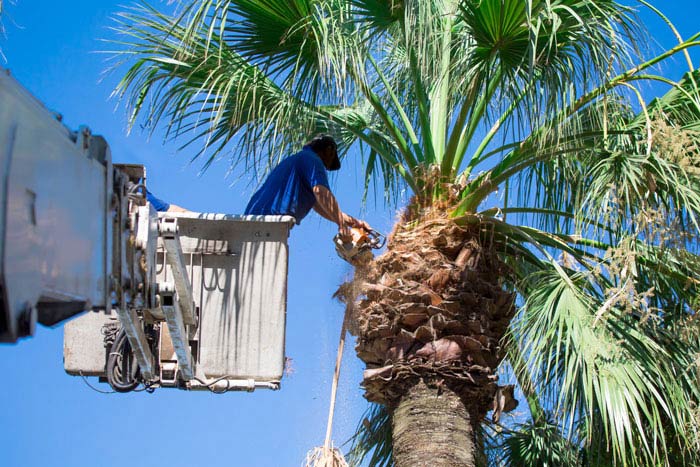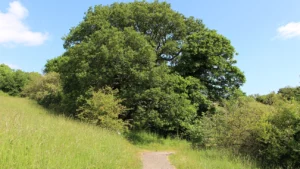Palm trees, often synonymous with tropical and subtropical environments, add a unique aesthetic to landscapes but sometimes need to be removed due to safety concerns, disease, or landscaping changes. This comprehensive guide will cover everything you need to know about palm tree removal, including where these trees are commonly found, average sizes, time required for removal, and a detailed cost calculator based on tree size.

Geographic Distribution of Palm Trees
Palm trees are predominantly found in warm regions around the world, including the United States, where they thrive in states such as Florida, California, Arizona, and Texas. In the U.S., different species of palm trees vary in their cold hardiness, which dictates their geographical distribution.
In Florida, palms like the Sabal palmetto (state tree) are common and can withstand the subtropical and tropical climates. California is famous for its iconic palm-lined streets, especially the towering date palms and fan palms. Arizona’s hot desert climate supports the growth of hardy species like the Washingtonia filifera. Texas also hosts a variety of palms, particularly in the southern regions, which resemble the warm, humid conditions of coastal and tropical areas.
These trees not only serve as ornamental landscaping but also play ecological roles in their native habitats. However, when a palm tree becomes a hazard or no longer fits in with landscaping plans, removal becomes necessary.
Average Size and Types of Palm Trees
The size of palm trees varies widely depending on the species. Common types of palms include:
- Date Palms (Phoenix dactylifera): These can grow up to 75 feet tall.
- Coconut Palms (Cocos nucifera): Typically reach heights of 50 to 80 feet.
- Royal Palms (Roystonea regia): These majestic palms can soar up to 100 feet.
- Queen Palms (Syagrus romanzoffiana): Usually grow to about 50 feet tall.
The height and trunk girth of a palm tree significantly influence the complexity and cost of removal. Larger palms require more time, specialized equipment, and increased safety measures, all of which contribute to higher removal costs.
Time Required for Palm Tree Removal
The time it takes to remove a palm tree depends largely on its size and location. A small palm tree, such as a 20-foot queen palm, might only take a couple of hours to remove, while a 100-foot royal palm could take a full day due to the need for cranes and more complex cutting techniques.
Additional factors that affect removal time include:
- Accessibility: Is the palm tree easy to reach, or is it surrounded by buildings or power lines?
- Health: A diseased or rotting tree may be more hazardous to remove than a healthy one.
- Preparation and cleanup: This includes the time to set up equipment and clear debris post-removal.
Proper planning and assessment by a professional tree removal service are crucial to ensure safety and efficiency during the process.
Average Cost of Palm Tree Removal by Size
To help you estimate the cost of removing a palm tree, here is a table that outlines average prices based on tree size:
| Tree Size (Height) | Average Cost (USD) |
|---|---|
| Under 30 feet | $150 – $450 |
| 30 to 60 feet | $200 – $950 |
| Over 60 feet | $500 – $1,200 |
These costs are estimates and can vary based on the factors mentioned earlier, such as tree condition and accessibility. It’s advisable to get multiple quotes from local tree removal services to find the best price and ensure that all necessary precautions are taken.
Removing a palm tree is a significant undertaking that requires professional assessment and equipment. Whether due to disease, safety concerns, or landscape redesign, understanding the size, location, and condition of your palm tree will help you better prepare for its removal and manage the costs involved. Always consult with a professional tree removal service to ensure that the process is conducted safely and efficiently.





